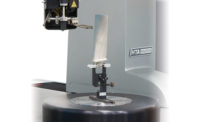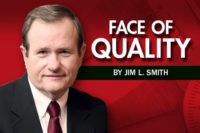
The face of calibration is constantly changing with the times. Adding to this evolution is that the complex field of metrology itself undergoes constant changes with new customer demands and concerns presenting manufacturers with a whole new set of challenges.
Initially, the main thrust of any business is to offer potential customers value for their business dollars. Coupled with this is the immediate need to garner customers, which is critical to the success of the enterprise. Keeping customers requires that the product meet appropriate quality levels, and that requires knowledge and hard work.
The field of metrology is unique not only because it requires specialized equipment and a stable environment from which to operate, but also an inherent knowledge of the complex methodology necessary to obtain extremely close measurements while still ensuring formal traceability to the National Institute of Standards and Technology (NIST).
End users must force themselves to keep up with ongoing changes because change is no different in the calibration industry than in any other. Unless change is drastic, it becomes an inherent part of one's existence and taken for granted.
The past
The key to the enhancement of metrology and calibration is improved technology mandated by higher quality standards and systems. This was prevalent in the early to mid-1980s when the newest innovations in measurement and calibration came from the coordinate measuring machine (CMM) manufacturers. Improvements in CMM accuracies coupled with major advancements in software technology improved CMM capability tenfold. In addition, with the onset of the B89 standard for CMM measurement, repeatability and bandwidth accuracy were no longer acceptable. Volumetric accuracy of the entire measurement area now had to be taken into consideration when evaluating a measurement process. Both the calibration and manufacturing industries had to view CMM measurements from a new perspective.
This basic concept change eventually led to the onset of determining uncertainty in measurement. Driven by NIST and various standards committees, the entire quality industry came to realize that all factors related to measurement must be considered in order to obtain realistic measurement of a given part or gage.
Because of these new theories, the most critical change came about within the calibration labs where measurement of primary standards took place. Typically, in the past, as long as a calibration lab was capable of meeting the old 10:1 measurement ratio, held a uniform environment and could provide a certificate of calibration traceable to NIST, labs were considered the final authority on measurement. For the most part, reported calibration data was considered viable and correct at all times. The mandated use of uncertainty values has completely changed the concept of measurement as it is known today. Now all factors that could have an adverse affect or cause variability to measurement results must be taken into consideration. These considerations are not limited to environment and equipment. Technician variability also is taken into account along with the stated uncertainty of the master reference standards being used as a basis for comparison and traceability.
Prior to measurement uncertainty and lab certification, the manufacturing sector took calibration at face value and did not consider that calibration labs can make mistakes. Consequently, if calibration results are taken for granted and no one takes a vested interest in calibration data or tolerances of the gages used for product acceptance, the entire manufacturing process is subject to problems. Manufacturing tended to rely heavily on statistical process control (SPC) to highlight quality variance. In some cases, quality problems would not have become an issue if the calibration process was given more prominence from the start.
Wakeup call
Introduction of the ISO 9000 standards in the mid to late 1980s sent a wakeup call to the manufacturing arena. U.S. companies started to realize that if they did not comply to a uniform standard for quality systems as their European counterparts did, their ability to sell internationally would not only be disrupted, but could possibly cease entirely.
The eventual acceptance of ISO standards by the United States in the early 1990s created the most dramatic changes to metrology and calibration. With the onset of ISO standards, companies were mandated to have a formal calibration program and maintain a formal auditing system internally, as were their vendors, and most, importantly, have a sound understanding of their entire quality system including a strong focus on calibration and traceability.
The advent of the manufacturing sector complying with ISO 9000 standards has had a profound impact on the calibration industry. Compliance to the standard is no longer being accepted by the manufacturing industry. Metrology and calibration labs must now comply and be accredited to ISO 17025. Uncertainty values must be stated on all certificates of inspection/calibration in addition to calibration data.
The use of uncertainty values has had an impact not only on calibration labs but on manufacturers of calibration equipment as well. Calibration equipment manufacturers are now stating equipment uncertainty values, enabling buyers to determine and obtain the most accurate equipment available on the market. Calibration software has become more comprehensive and automated. Not only does the software include gage tolerances and real-time temperature compensation capabilities, but entire gage management systems are included as well.
The good and the bad
Unfortunately, all of the news is not as upbeat as one would think. Yes, the manufacturing and calibration sectors have improved considerably because of mandated quality standards, automation and software enhancements. But, there is still a long way to go. The entire face of calibration is starting to change again because of the ongoing improvements and automation within the quality industry.
A major concern is that the industry has not kept up the ongoing training required to meet the new challenges. Without proper and ongoing training of personnel, all of the automation in the world is not going to improve measurement reliability, particularly if the personnel reviewing and analyzing problems are not prepared to understand the results.
How can anyone be expected to make improvements if they do not understand what element needs to be changed?
The United States is not the only country struggling with this dilemma. Comments from European counterparts in both the manufacturing and calibration sectors coincide with the ones expressed in the United States. One opinion expressed by both sides is that calibration should not be viewed strictly as a cost of doing business, but as a viable method for reducing the cost of quality in the product life cycle.
The future
Where is the industry headed? Training issues will never go away, and both the quality and manufacturing industries are faced with pressures from competitors, the lagging economy, benefit costs and strong influence from low-cost foreign competition. These factors are multiplied tenfold in small- to
medium-size companies looking for help to supplement their quality and calibration functions while still keeping the cost of quality manageable.
Because of the mandates and changes occurring within the quality arena, a different approach by the manufacturing sector regarding their calibration and gaging programs is beginning to emerge. Manufacturing companies are actively seeking metrology labs to help manage their entire quality programs vs. performing calibration in house with full-time staff. Companies have started to realize the inherent problems associated with poorly trained personnel performing calibrations.
No one has all of the answers and with all of the challenges facing the manufacturing sector to cut costs and streamline their operations, the future of calibration labs will be changing quite rapidly. Calibration is a growth industry and will continue to be one. However, calibration labs must be more proactive in their supporting role to the manufacturers. Labs need to promote and develop stronger partnerships with manufacturing in order to provide a complete technical support package versus just performing the calibration function.
Yes, the face of calibration is constantly changing and will continue to do so. Just how these changes occur, good, bad or indifferent, remains to be seen.
Tech Tips
1. The use of uncertainty values has had an impact on calibration labs and on manufacturers of calibration equipment.
2. The manufacturing and calibration sectors have improved considerably because of mandated quality standards, automation and software enhancements.
3. Manufacturing companies are actively seeking metrology labs to help manage their entire quality programs.
4. Calibration labs must be more proactive in their supporting role to the manufacturers.

